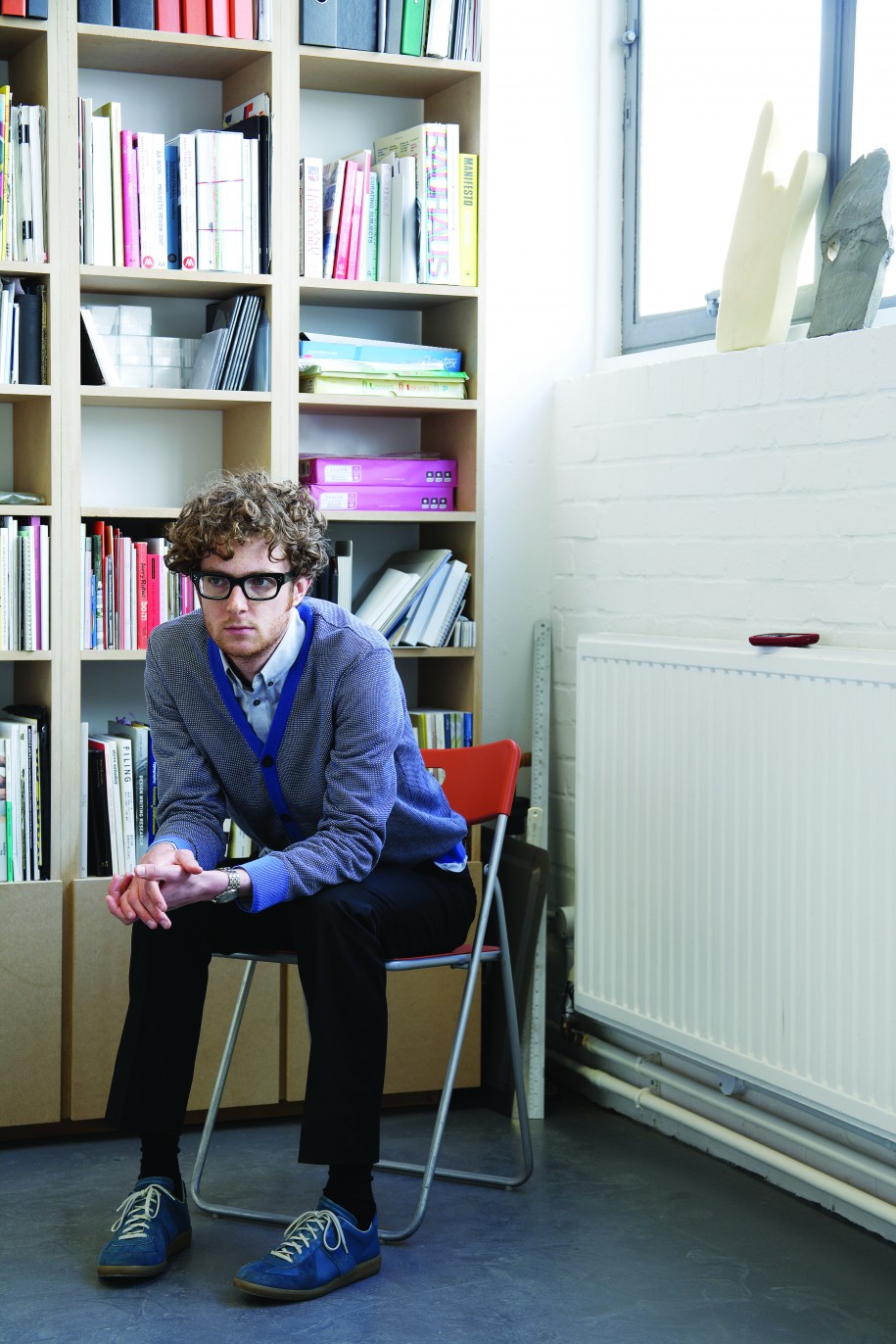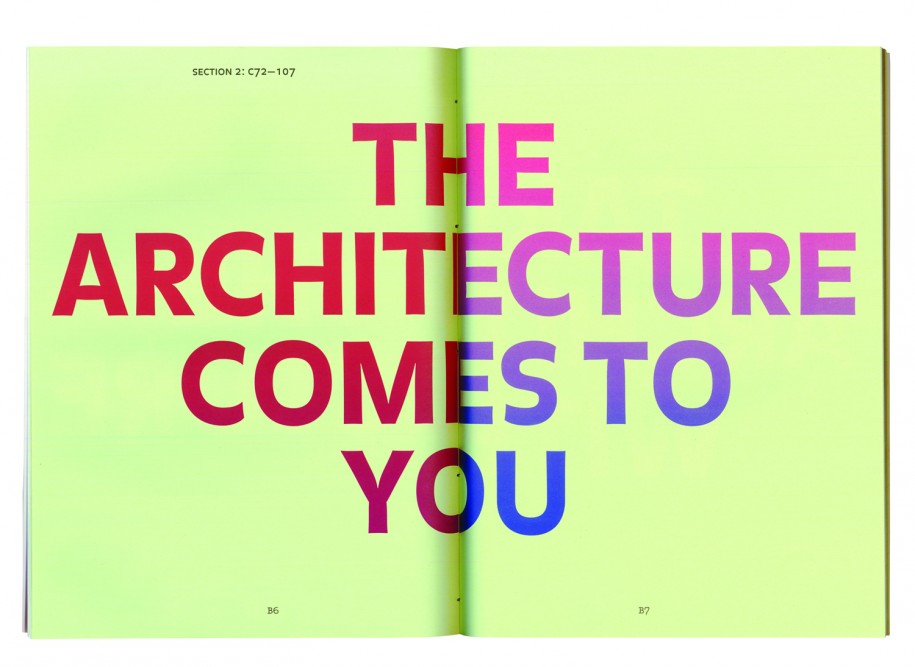ARCHIVE
ZAK KYES
interview by Hans Ulrich Obrist

HANS ULRICH OBRIST We came together in 2007 from different contexts and different parallel realities. You designed our 2008 Serpentine Manifesto Marathon publication, for which we invited 70 practitioners to read manifestos for the 21st century. This took place in close proximity to speakers᾽ corner in London᾽s Hyde Park. Out of that grew the ideas for many more collaborations. Could you tell me more about your involvement with publications?
ZAK KYES I thought one of the first things we could talk about is the idea of the private press. You mentioned Speakers᾽ Corner, where people like William Morris once spoke. The term “private press” refers to a movement in artist-led book production, exemplified by Morris in the 19th century and later in the neo-avant-garde with Dick Higgins and his Something Else Press (1963). At the Architectural Association (AA), which I joined as Art Director in 2007, I am very interested in reconnecting with this legacy, revisiting its history without nostalgia but rather with consideration for these projects as operational models.
I guess I could say my work engages with publications and their dissemination as sites for debate and exchange rather than mere documentation. For this reason, we at the AA initiated Bedford Press, a private press that aims to experiment not only with the form of the books we publish but also with their content. Recent Bedford Press publications include AA, Noted Without Comment, FOI Annex and Excursus 1: Exhibition Prosthetics. The key idea here was to establish a more direct link between content and design, technology and production to create a new book economy.
Another earlier model, speaking of the neo-avant-garde, is Superstudio, whose speculative proposals and critical practice was generally described as “paper architecture.” The immaterial nature of their proposals was best realized not in constructions, but in book form.
HUO Could you speak about the relationship between graphic design and architecture—specifically in relation to the exhibition you curated?
ZK An interest in the parallels between architectural and graphic space led me to curate the exhibition “Forms of Inquiry: The Architecture of Critical Graphic Design,” which investigates the exchange between the two disciplines. The exhibition originated at the AA in 2007 and traveled to Casco, Lux, IASPIS, Bolte Lang and Archizoom. At each new point in this constellation of venues, it expanded to emphasize local research and sites for production.
HUO “Forms of Inquiry” was a very interesting exhibition at the AA. Ma Yansong speaks about a new generation of architects; in a similar way, there is obviously a new generation of graphic designers brought together in this exhibition. It would be interesting if you could talk more about the content of the show, how you brought these designers together, and whether there was really any common ground. Ma Yansong confirmed that, in contemporary architecture, the situation is more atomized; everybody is on his own. Is it different in graphic design?
ZK One of the surprising realizations was that, although the practices were conceptually and geographically diffuse, certain shared ambitions emerged once the work was gathered together. To an outsider, it might even appear to have the coherence of a movement. What united much of the work was that all the practitioners viewed graphic design as a specifically critical activity.
HUO Can you talk more about this notion of criticality? Was it critical towards the field of graphic design, critical towards the industry, critical towards Capitalism, critical towards the World, critical towards the context?
ZK The idea of criticality in graphic design was manifested in several ways, many of which attempted to undermine the conventional notion of the designer as a “service provider.” The designers in the exhibition engaged with the circumstances surrounding contemporary graphic design practice. What was optimistic about the exhibition was that it presented graphic design not as a way of representing someone else᾽s information but as a tool to create knowledge.

HUO Quantum physicist David Deutsch describes the “Fabric of Reality” as, in fact, parallel realities. You are a graphic designer but you also do many other things. Could you tell us about your other parallel realities?
ZK As a graphic designer, I frequently find myself in a position where I must be knowledgeable about many different practices and agile enough to negotiate their boundaries. This position of constantly being “between” has necessitated many multiple identities. That often means that the verb “design” encompasses various roles extending far beyond the production of objects, such as editor, printer, curator and organizer. And though I don᾽t profess to be an expert in any of these fields, they feed an intellectual curiosity that shapes the way I view graphic design.
HUO Speaking of design extending beyond the production of objects, could you speak about your recent collaboration with David Greene, who has often been described as the poet of archigram?
ZK David Greene and I worked together on the publication L.A.W.U.N* Project #19. The publication was conceived for an exhibition in which he had invited designers, artists, writers and fashion designers to re-imagine projects that he had done either as part of Archigram or outside of Archigram.
HUO Similar to Cedric Price, Greene always distrusted the motives for adding more buildings to world, unless really urgent or necessary. For example, when Cedric Price got a commission to design a family house, he recommended that the couple that commissioned him get divorced rather than build a new house. Price also injected a limited lifespan into buildings. And when I edited his Re: CP book he suggested that the book have an expiry date! In a similar way, David Greene has resisted most things, and he has also resisted books. Hence my question to you: How did you convince him to do that book?
ZK Every stage was met by a certain resistance—or rather criticality. David once sent me a text message, which read, “Declare a moratorium on building.” His view of the future of architecture was marked by a deep skepticism of its implicit authority. To his credit, David resisted the book to the very end. It happened because his co-author Samantha Hardingham and I felt it was incredibly urgent for the book to be made. His work as an architect resists finality and the book responded to this by being an incomplete sketch—a loose bundle of texts, projects, and ephemera.
HUO Which profession other than yours would you like to attempt?
ZK Librarian.
HUO Which profession other than yours would you not like to attempt?
ZK Anything that᾽s a service provider—or what most people believe graphic design to be.
HUO And now, I would like to hear a little bit more about the future . . .
ZK The future will be published soon.



